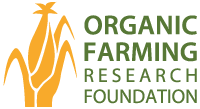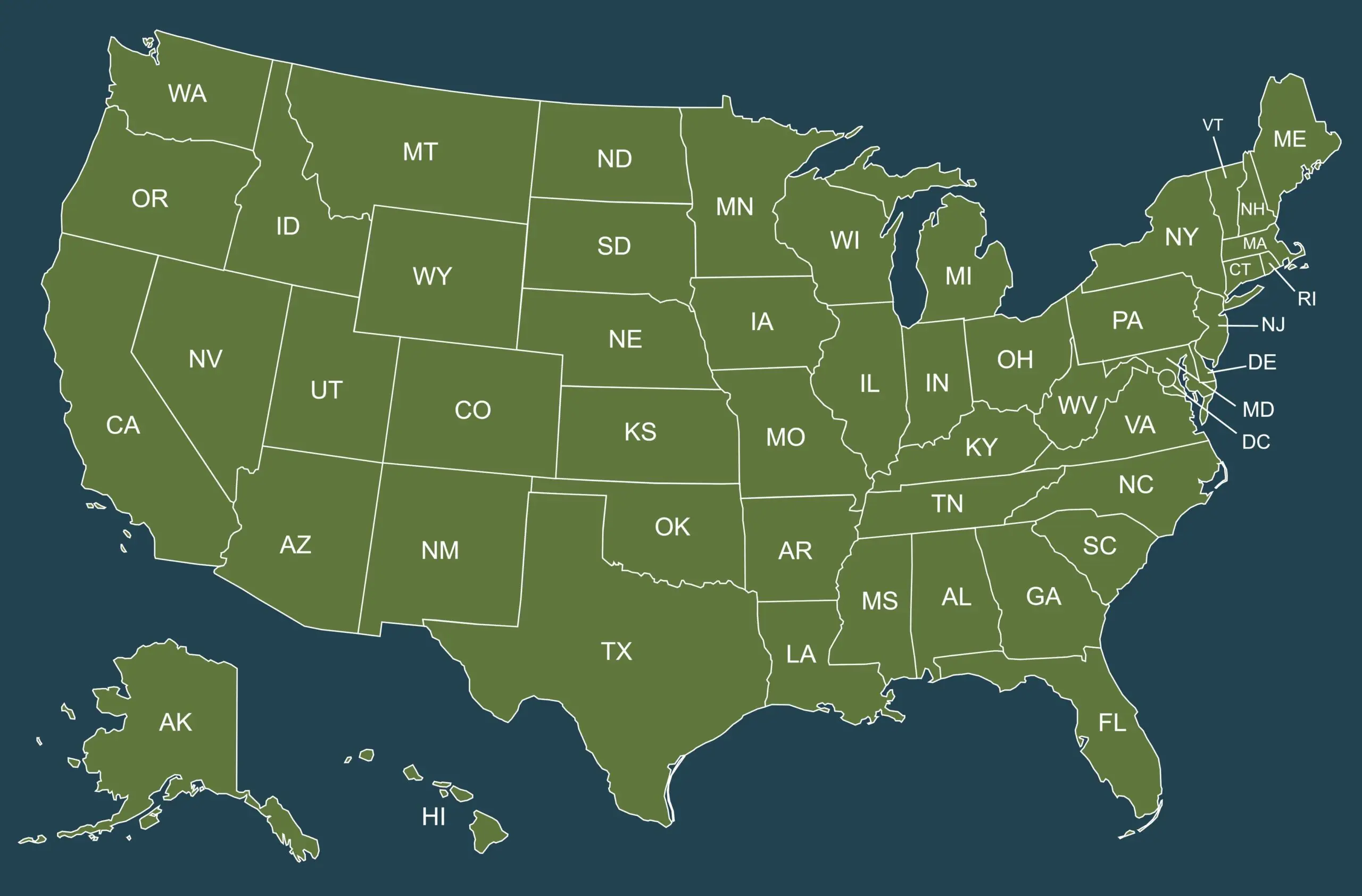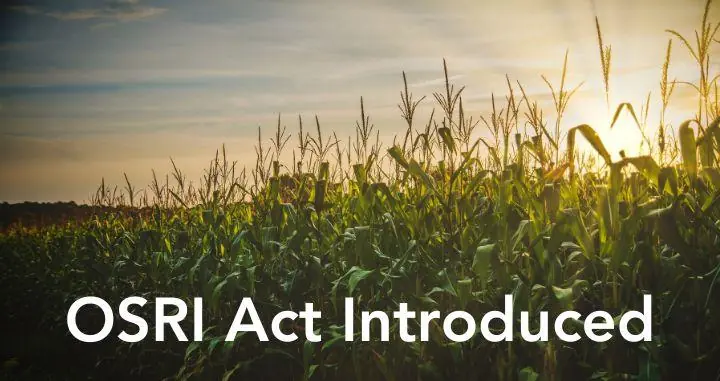ADVOCACY
Policy Priorities
OFRF recognizes the organic method as the leading form of agriculture and a vital solution to many challenges facing U.S. agriculture. However, USDA support has not kept pace with the sector’s rapid growth and increasing importance. We have developed a new set of Policy Priorities designed to align research investments with market opportunities, enhance technical and financial assistance for organic farmers and farmworkers, and strengthen the incentive structures that reward sustainable stewardship of our natural, social, and economic resources.
Our three priority areas are:
- Investing in Organic Research: USDA research investments into organic agriculture topics proportionally reflect the industry’s growing market share.
- Amplifying Economic Benefit of Organic: Rural communities and economies benefit from the organic economic engine.
- Increasing Technical Support: USDA and State Technical and Financial Support Agencies continue to work to increase Organic Producers’ utilization of their resources.
Investing in Organic Research
Amplifying Economic Benefit of Organic
Increasing Technical Support
By embracing and supporting these policies, Congress and the USDA can unlock the full potential of the organic sector—creating economic opportunities, empowering producers, strengthening rural economies, and delivering environmental benefits that extend far beyond the farm.
In the webinar below, recorded in September by Iroquois Valley, Policy Program Director Gordon Merrick presents the latest policy developments impacting organic farmers, federal funding opportunities, and what’s ahead for organic agriculture nationwide:
Organic Research State-by-State
OFRF has developed state-by-state “leave behinds” that are meant to communicate the size of the organic market, the importance of organic research investments, and regional research priorities.
Explore the map by hovering over states names to discover some high-level facts about organic agriculture research in those regions. To learn more, click the state name to access a PDF with more details. Download, save, print, and share these!
These state-by-state resources were created using data from various sources, including the USDA’s National Agricultural Statistics Service’s latest organic survey from 2021, the Agricultural Marketing Service’s Organic Integrity Database, and the Organic Trade Association’s Organic Industry Surveys. If you have a question about data in your state or region, contact OFRF’s Senior Policy & Programs Manager Gordon Merrick: gordon@ofrf.org
National Organic Research Programs at the USDA
Along with these state-specific resources, we’ve developed a new leave-behind that highlights USDA’s national organic research programs. This resource covers research conducted by the Agricultural Research Service (ARS) and competitive grant programs through USDA’s National Institute of Food and Agriculture (NIFA), including the Organic Research and Extension Initiative (OREI), Organic Transitions Program (ORG), Sustainable Agriculture Research and Education Program (SARE), Specialty Crop Research Initiative (SCRI), and Agriculture and Food Research Initiative (AFRI). It details how funding is distributed, points out challenges faced by these programs, and showcases example projects.
#GetActive – A Step-by-Step Guide to Engaging in Advocacy
Our goal is to provide you with the best information to sustain powerful organic advocacy in your community.
This Step-by-Step Guide will walk you through how to familiarize yourself with who your legislators are, where they stand on critical ag policy issues, and how to reach out to them to share your story. Grab a notebook, click through the buttons below, and get ready to #GetActive. You can always contact us if you need additional support, we’ll do our best to assist you in raising the voice of organic farmers and researchers.
Ready to do more?
Use the links below to share your story with us, or watch the short video about Communicating with Legislators to learn how to share your story directly with decision-makers in your area.
SHARE YOUR STORY
We Want You to Hear From YOU
Farmers and Researchers, we need your help to deepen the impact of our advocacy work! Facts, figures, and statistical breakdowns of the effects of increased public investment in agricultural research are important, but the lived experiences and stories of researchers and farmers communicate more than a report ever can. This is why we are beginning to implement a new strategy in our policy advocacy: story banking. This means collecting and amplifying stories of researchers and farmers around the U.S. who have effectively shared their work with decision-makers.
SPEAK UP FOR ORGANIC
Communicating with Legislators Email Course
Looking for a simple way to speak up for organic? Our Communicating with Legislators email course gives farmers, researchers, and advocates the tools to share their stories confidently.
Delivered by email, this free, self-paced course includes short videos from OFRF’s Senior Policy & Programs Manager, Gordon Merrick, plus easy action steps and support from our team. You’ll learn how Congress works, why your voice matters, and how to make it heard—no policy degree required.
OFRF’S STATEMENTS
As an organization committed to the improvement and widespread adoption of organic farming systems, OFRF is deeply involved in both the farm bill and the appropriations processes. We are working hard to advocate for organics at every turn.
OFRF is an active participant in both the legislative and regulatory systems. Below are the actions we have taken in those processes: Organizational Sign-On Letters we have both sponsored and endorsed, Congressional Testimony on Farm Bill and Appropriations priorities, and comments we have submitted to USDA and other regulatory agencies.

- House Organic Science and Research Investment (OSRI) Act Sign-On Letter (October 2025, OFRF led)
- Senate Organic Science and Research Investment (OSRI) Act Sign-On Letter (April 2025, OFRF led)
- FY26 Agricultural Research Service (ARS) Community Support (March 2025, OFRF endorsed)
- Packard and Stockyards Act, Contract Grower Rule (February 2025, OFRF endorsed)
- Organic Research in the Next Farm Bill Sign-on Letter (June 2024)
- Safeguarding Agricultural Research Funding Sign-on Letter (July 2023)
- Organic Science and Research Investment Act (OSRI Act) Sign-on Letter (July 2023)
- Strengthening Organic Agriculture Research (SOAR) Act Sign-on Letter (May 2023)
- Building Resilience Through Agricultural Research in the Upcoming Farm Bill (November 2022)
- Group Support of Climate Solutions in the Inflation Reduction Act of 2022 (August 2022)

- OFRF Comments on USDA’s Reorganization Plan (August 2025)
- Written Comments for NOSB Spring Meeting (April 2025)
- OFRF Comments on AMS’s Specialty Crop Competitiveness Initiative (SCCI) (March 2024)
- OFRF Comments on NRCS Conservation Practice Standards (CPS) (March 2024)
- Written Comments for NOSB Meetings (April 2022)
- Letter to USDA National Organic Program to Protect Native Ecosystems (March 2022)

- Testimony Submitted by Gordon N. Merrick, FY 2025 Appropriations for United States Department of Agriculture (May 2024)
- Testimony Submitted by Gordon N. Merrick, FY 2025 Appropriations for United States Department of Agriculture (April 2024)
- Testimony Submitted by Gordon N. Merrick, FY 2024 Appropriations for United States Department of Agriculture (April 2023)
- Testimony Submitted by Gordon N. Merrick, FY 2024 Appropriations for United States Department of Agriculture (March 2023)
- Submitted Statement of Thelma Velez to the House Committee on Agriculture in Climate Research Hearing (June 2022)
GORDON’S POLICY CORNER
We share the latest policy updates and action alerts each month in Gordon’s Policy Corner. Sign up for OFRF’s newsletter to make sure you never miss one, and feel free to reach out to Gordon with any policy or advocacy questions: gordon@ofrf.org
Something to be Grateful For: Northeastern State Secretaries of Agriculture Send Letter to Secretary Rollins about OREI
On November 20th, the state secretaries of agriculture from Connecticut, Delaware, and New Jersey joined Pennsylvania Secretary Redding to submit a letter to the U.S. Secretary of Agriculture, Brooke Rollins, requesting unreleased FY2025 funding for the Organic Agriculture Research Extension Initiative (OREI) be included on top of new fiscal year funds for the program in FY2026.
How OFRF is Building Bipartisan Support for Organic Research Programs in Congress
At a moment when the organic sector is the fastest growing segment of U.S. agriculture, the need for its fair share of research investments has never been clearer. That's why we are working hard to build bipartispan support for the Organic Science and Research Investment (OSRI) Act. Discover how the OSRI Act will support all producers.
The Organic Science and Research Investment Act: What It Is and How It Benefits All Farmers
Developed with OFRF’s leadership, the bipartisan Organic Science and Research Investment (OSRI) Act—introduced by Reps. Mike Lawler (R-NY-17) and Eugene Vindman (D-VA-07)—expands USDA funding for organic research that benefits all farmers and strengthens the future of American agriculture.
The Government Shutdown: What it Means for Organic Farming and Research
In the midst of a government shutdown, with no clear end in sight, organic farming and research is taking a hit. A complete freeze in all federal work directly affects the nation’s programming at USDA, especially for organic producers and the agricultural research they depend on. This month’s Policy Corner breaks it down.
Meet our Programs & Policy Team

Gordon Merrick, J.D.
Gordon is our Policy Program Director. He oversees OFRF’s policy programs and leads the charge on developing and building coalitions to further our policy priorities. Get in touch with him with questions about Congressional or Agency advocacy, or how to generally get engaged in OFRF’s advocacy work. gordon[at]ofrf.org

Rebecca Champagne, Ph.D.
Rebecca is the Conservation Scientist at OFRF. She is primarily responsible for OFRF’s work under our NRCS Cooperative Agreement, but is also at work helping develop a community of researchers across the nation who are interested in sharing their story. Reach out to her to talk about NRCS conservation programs, the latest organic research, or her love for New England. rebecca[at]ofrf.org

Vinnie Trometter
Vinnie is our Policy Manager. He is the boots-on-the-ground in Washington, D.C., facilitating meetings between organic advocates and their elected officials and educating executive agencies and members of Congress about the importance of organic agriculture research programs. If you’re interested in setting up a meeting with your member of Congress, Vinnie is the guy to talk to. vinnie[at]ofrf.org












